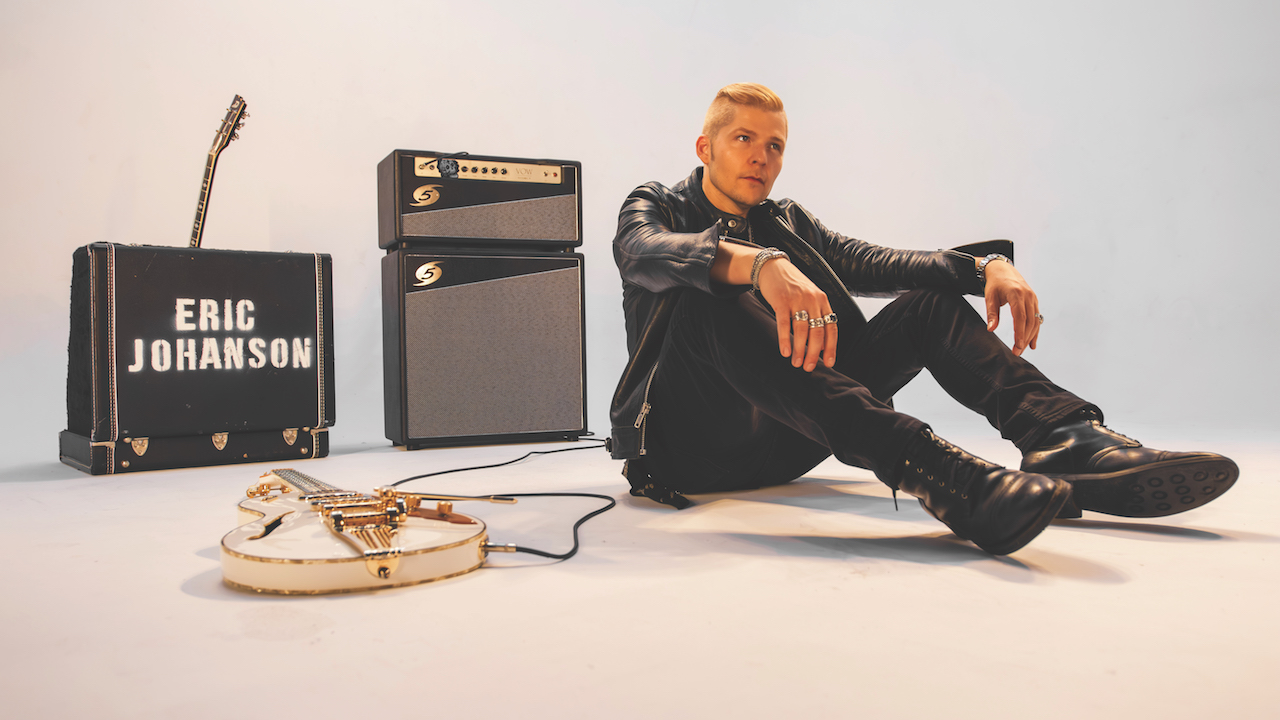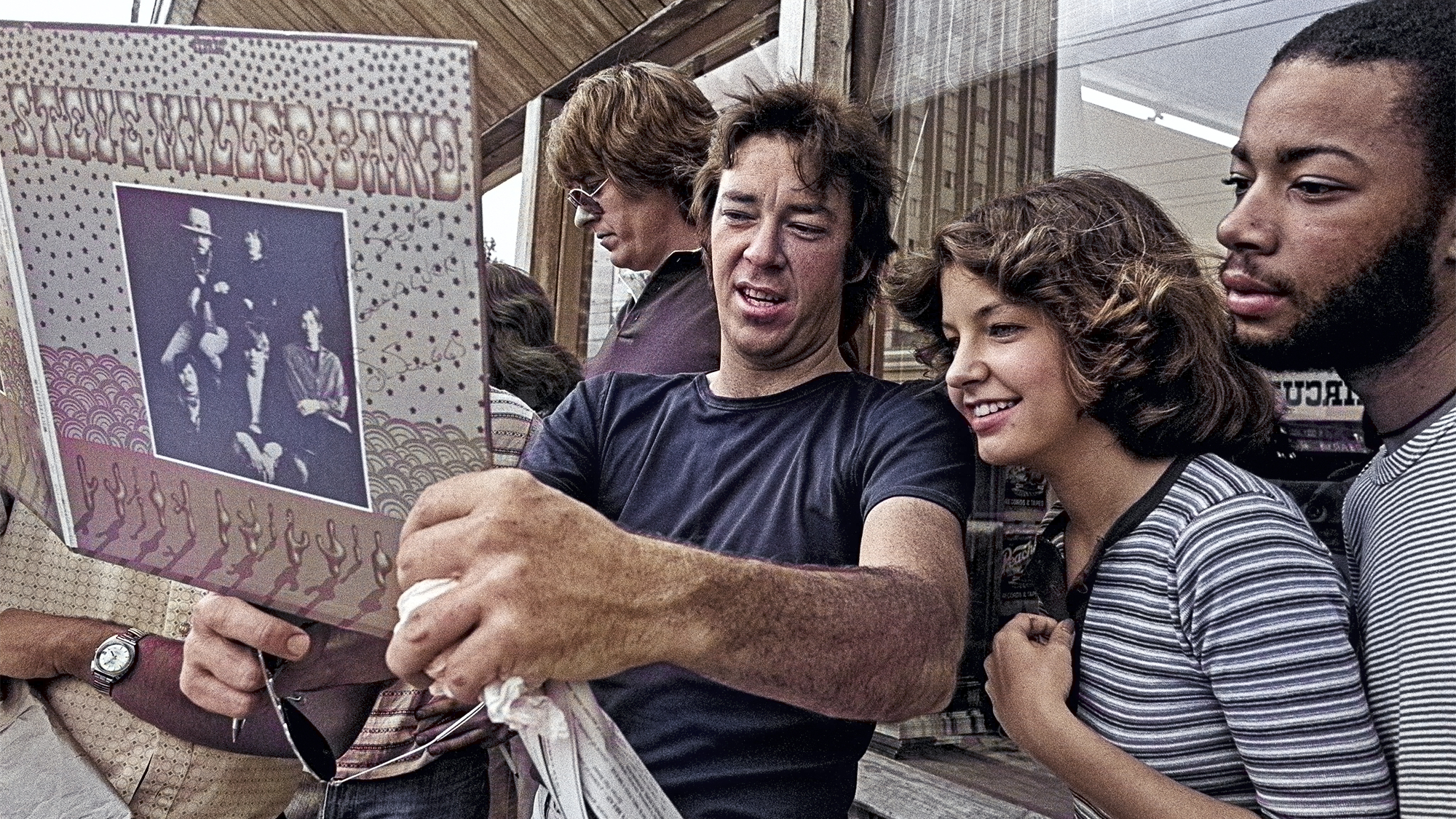“I had a gold Klon but I lost it in Hurricane Katrina...” Blues supremo Eric Johanson on being both a Metallica and Jack White fanboy and why he’s into tone as much as music
With the help of "a really gritty velcro fuzz", blues guitarist Eric Johanson gets into the raw experience of the moment on his latest album, The Deep and the Dirty
WHEN GUITARIST ERIC JOHANSON was coming up, it wasn’t the slippery slide work of Elmore James and the tones of the blues greats that excited him. Once he began playing at age five, what kept him interested in guitar was the manic rhythm playing of Metallica’s James Hetfield.
“The rock albums with the big, thundering bass, the drums punching you in the chest and the guitars that sounded huge — that’s what drew me in,” Johanson explains. “Some of my earliest experiences trying to figure out what I was hearing came down to the tones and textures and the sound itself, rather than the notes and chords.”
Johanson’s obsession with building walls of sound with his guitar never stopped, even as his interests expanded to include blues. For evidence, listen to the tall tones on The Deep and the Dirty (Ruf Records), his fourth and latest album of original music, which are as ferocious and fuzzy as anything in Jack White’s catalog.
Those tones have been part of his sound all along — like his speaker-shredding blast on “Till We Bleed,” from his 2017 debut, Burn It Down, and the adrenalized tones on “Buried Above Ground,” from 2020’s Below Sea Level — but they’re larger than ever now.
“I’m working on my sound constantly,” Johanson says. “When I get in the studio, it’s more or less just a snapshot of what I’ve got going on with the rig at that moment. I’m a big fan of that symmetry between the studio setup and the live setup.”
After starting out in 2010 as a guitarist for acts like Cyril Neville, Johanson signed with Tab Benoit’s Whiskey Bayou Records in 2016 and has worked solo since.
On 2021’s Covered Tracks volumes one and two, he dug mostly into acoustic instruments as he re-imagined songs by Nine Inch Nails, Chicago, Fiona Apple and the Beatles. But on The Deep and the Dirty, Johanson roars back on electric from the first notes of the opening track, “Don’t Hold Back.”
All the latest guitar news, interviews, lessons, reviews, deals and more, direct to your inbox!
“I’m really into the raw experience of the moment,” he says. “I want this explosive kind of energy. There’s something about a really gritty Velcro fuzz that, to me, expresses the emotion I was trying to get across, especially opening up the record like that.”
Given what you’ve said about how rock music affected you as a child, I have to imagine tone remains your primary focus?
I’m really particular about tones, and I always try to get the sounds right with just the guitar and the amp first when recording. You really can’t fix that if it’s not right to begin with. I like a lot of bottom end, so I’m usually running a 4x10 cabinet or a 4x10, plus a 1x12 or 2x12, because I like a full-range sound.
Once I’ve got a full-range sound going, then I’m usually trying to dial in enough grit to have some sustain and a little bit of natural compression going on without losing the definition or getting too much high end.

Is having a full-range setup a necessity for you in a trio?
I think it definitely is. If you’re doing the trio thing, it wouldn’t make sense to have an exclusively top-end sound, because you are covering so much ground. But that also is just what appeals to me. I really don’t like piercing guitar tones that lack bottom end. There are guitar players I like a whole lot, like Freddie King — I love him and can listen to him all the time — but I would never try to seek out his guitar tone.
My tone knobs are generally set up the middle, with a little tweak one way or another, depending on what it’s sounding like to me in the room. I want to have this natural, warm, full sound, where it can be loud without hurting your ears.
Is the core of your sound still your Category 5 amplifier?
That’s the main amp. It’s just one channel, with volume, tone and reverb controls, but I also have a ’66 Fender Deluxe Reverb as the second amp, and they’re pretty much equal in the mix at all times.
On The Deep and the Dirty, we also had an Orange amp for a clean track, just in case, and it did come in handy on some of the fuzzy songs and places where we wanted to bring out more definition. Other than that, it was pretty much just the rig.
I really like a round sound, so I’ve taken to stacking a couple of overdrives. While I like the sound of the amp just cranked, it doesn’t always respond exactly how you want it to, because it can start to collapse on itself with a non– master volume amp.
So I’ve gotten into trying out different overdrive pedals and figuring out which ones stay true to the sound of the amp. Fuzz is really a new thing for me. I stayed away from it for a while, just because it’s such a different level of intensity sometimes.
How deep is your overdrive bullpen now?
The sound of the Category 5 when cranked is great, but I have taken to not running it in a super-overdriven state, partially because I like the punch of the note attack. On a non–master volume amp, when you start to get it to sing, you also lose the percussive attack. You can’t really have both. And the way I’ve been able to dial that in, especially at different volumes and different venues, is to use overdrives.
The Origin RevivalDRIVE is one pedal I’ve found that’s really good for that. It has a mix control, so depending on the level I’ve got the Cat Five turned to, I can use the mix knob to let through more of the direct guitar or the pedal.
In front of that, I’ve gone back and forth between a Klon KTR and a Wampler Tumnus Deluxe, which I like because it has a full EQ on it, so you can get those mids under control a little bit. But the KTR is the one I used on this record. I had a gold Klon back in the early 2000s, but I lost it in Hurricane Katrina.
How closely did the themes on The Deep and the Dirty influence your tones?
The style of music I play is very much about creating in the moment, so every time you play it you’re reinterpreting it live, and it’s different every time.
I’m getting into those ideas in various places on the record, and certainly the first song, “Don’t Hold Back,” is exactly what I’m talking about. This moment, right now, is all we get. There’s something about the tone that grabs me; the texture of it excites me.
I’ve learned that I am just about as into sound as I am into music. In other words, the textures and the tones of things. I want the sound of the record to be the sound of the actual guitar rig, versus just recording some old little vintage amp that you only had in the studio that week. I want to feel like I’m hearing the speakers right in front of me.
The Deep and the Dirty by Eric Johanson is out now and available to buy or stream
Jim Beaugez has written about music for Rolling Stone, Smithsonian, Guitar World, Guitar Player and many other publications. He created My Life in Five Riffs, a multimedia documentary series for Guitar Player that traces contemporary artists back to their sources of inspiration, and previously spent a decade in the musical instruments industry.







